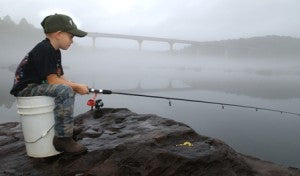Hey, Summer Lovers!
What says ‘summer’ more than the Fourth of July? Well, maybe summer camp, but after that I think our Independence Day really drives summer home. No matter what you do today, be it participating in a parade, enjoying a carnival or fair, attending a picnic, a concert, a baseball game, a get-together, or simply admiring the explosive colors in the night’s sky, on July 4 you know it’s SUMMER!
Happy Fourth!
Our modern celebration of Independence Day may be a familiar sight but before 1776, the fourth of July was just another date on the calendar. Back then, the colonists, despite their move in 1620 to ‘The New World’—an attempt to claim their independence—still found themselves under the rule of King George and the government of Great Britain.
As unfair taxation and other conflicts grew between the colonists and the rule of King George, the colonies held a Continental Congress to resolve the matter once and for all. A Virginia statesman named Richard Lee is known for his words in a meeting on June 7 of 1776,
“Resolved: That these United Colonies are, and of right ought to be, free and independent States, that they are absolved from all allegiance to the British Crown, and that all political connection between them and the State of Great Britain is, and ought to be, totally dissolved.”
Pretty different from the way we speak today, Mr. Lee was simply saying that the colonies were able to govern themselves and didn’t need Great Britain to do the job.
It was these words that set the wheels in motion. A committee was formed to draft a document stating the colonies’ case for freedom from Britain’s reign. The five members of the committee included John Adams, Roger Sherman, Ben Franklin, Robert Livingston, and Thomas Jefferson. It was Jefferson who actually wrote the document.
After days of careful examination and minor revisions, the document was finally completed on July 4 and the majority of the colonies voted in favor of it. Independence Day celebrates the day that the colonies adopted our Declaration of Independence in 1776.
The document collected signatures of our founding fathers—first and foremost, the signature of John Hancock, President of the Continental Congress, who signed in large print supposedly so “King George can read that without spectacles!”
So, from everyone here at Everything Summer camp, enjoy your Fourth of July, from sea to shining sea.
- John





 fabric (which we also see from Egyptian mummies).
fabric (which we also see from Egyptian mummies).

